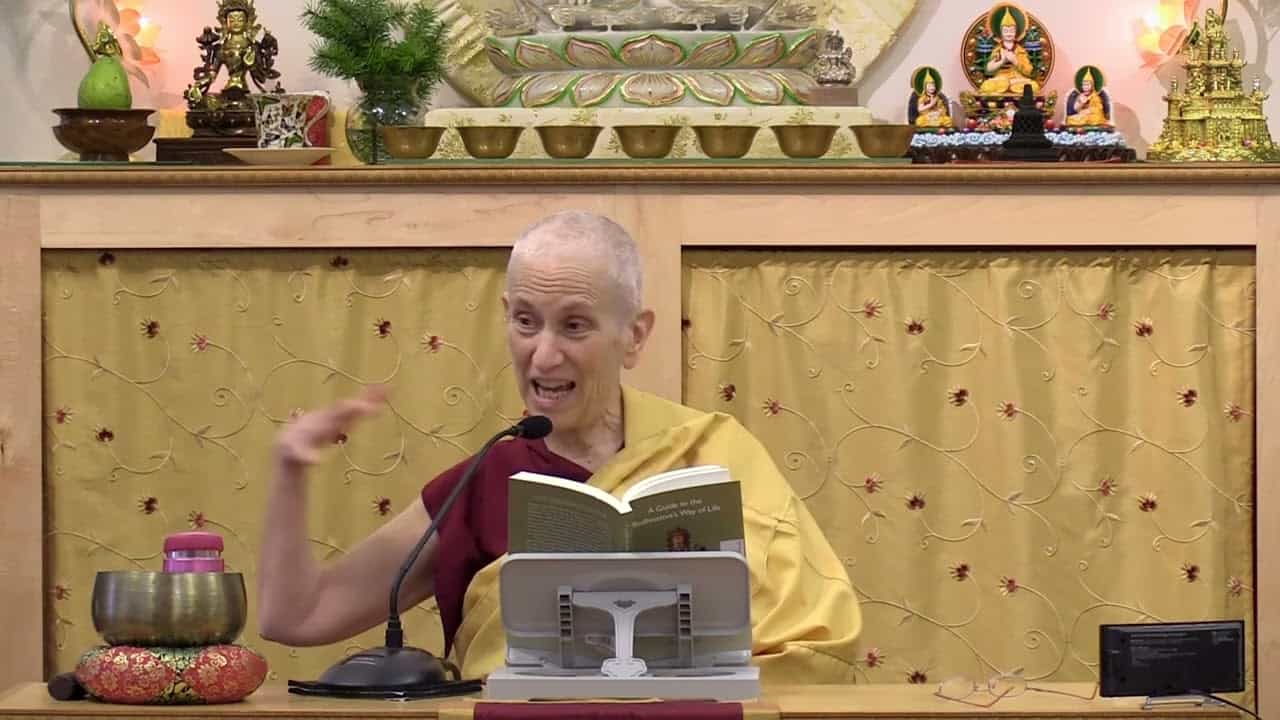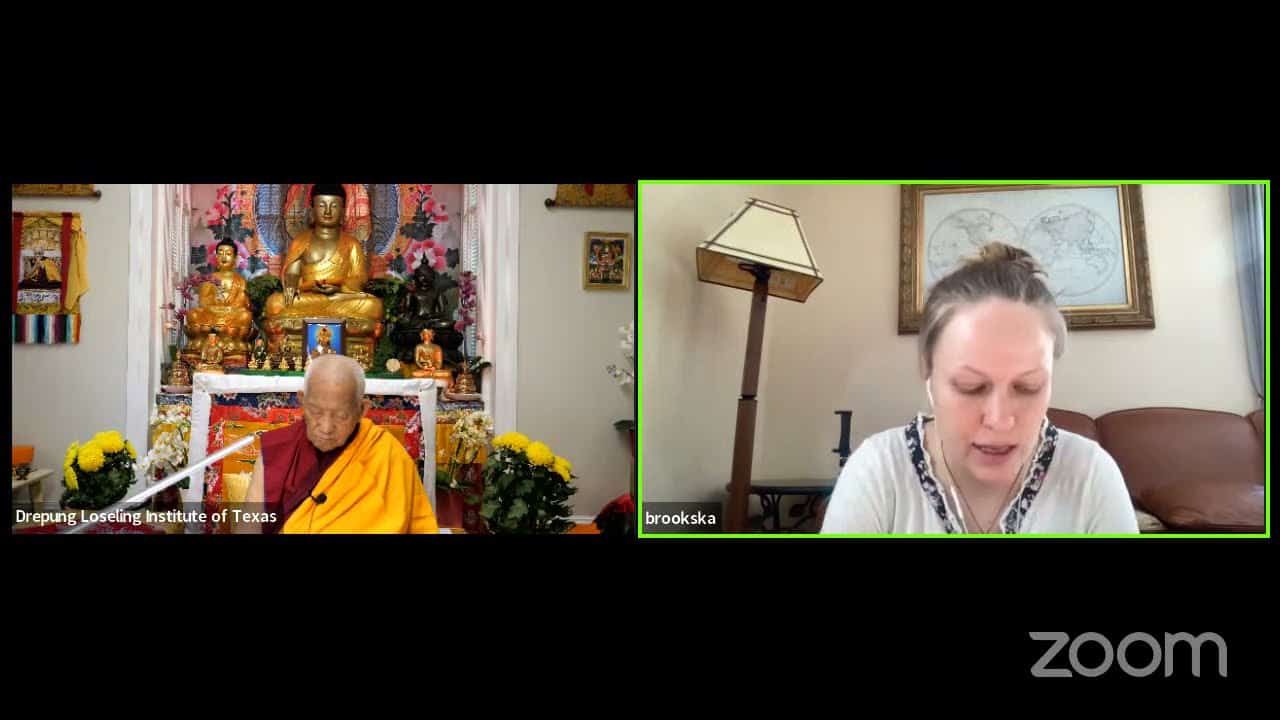Sources, contact, feeling
50 Samsara, Nirvana, and Buddha Nature
Part of an ongoing series of teachings (retreat and Friday) based on the book Samsara, Nirvana, and Buddha Nature, the third volume in The Library of Wisdom and Compassion series by His Holiness the Dalai Lama and Venerable Thubten Chodron.
- Two ways of describing the links
- Developmental model and active process for cognition
- Name and six sources depend on each other
- Explanation of bhavanga
- How we dualistically discriminate
- Three conditions for contact and how contact happens
- Observed object condition, dominant condition, immediately preceding condition
- Six objects, six sources and six consciousnesses
- Pleasurable, painful or neutral feeling or experience
- How we react based on the pleasurable or painful feeling
Samsara, Nirvana, and Buddha Nature 50: Sources, Contact, Feeling (download)
Contemplation points
- Make some examples of the factors that must come together as name and form to produce contact in daily life.
- Take some time to contemplate the verses by Buddhaghosa from the text about how the mental and physical bodies are dependent upon each other.
- Reflect upon contact in the context of 12 links. What traditional image in the Tibetan tradition represents the 6th link? Why do you think this picture has been chosen?
- We normally think contact is a good thing, but why is this link considered to afflict transmigrating beings? Make some examples from your own experience of how contact leads to each of the three types of feeling and why this is an unwelcome process.
- Take an example from your life, for instance seeing something. What conditions need to be present for you to be able to see what you are seeing?
- Imagine a sensation such as the feeling of hunger in your stomach. Trace back which of the six objects, six cognitive faculties, and six types of contact are involved in the evolution of that feeling.
Venerable Thubten Chodron
Venerable Chodron emphasizes the practical application of Buddha’s teachings in our daily lives and is especially skilled at explaining them in ways easily understood and practiced by Westerners. She is well known for her warm, humorous, and lucid teachings. She was ordained as a Buddhist nun in 1977 by Kyabje Ling Rinpoche in Dharamsala, India, and in 1986 she received bhikshuni (full) ordination in Taiwan. Read her full bio.


